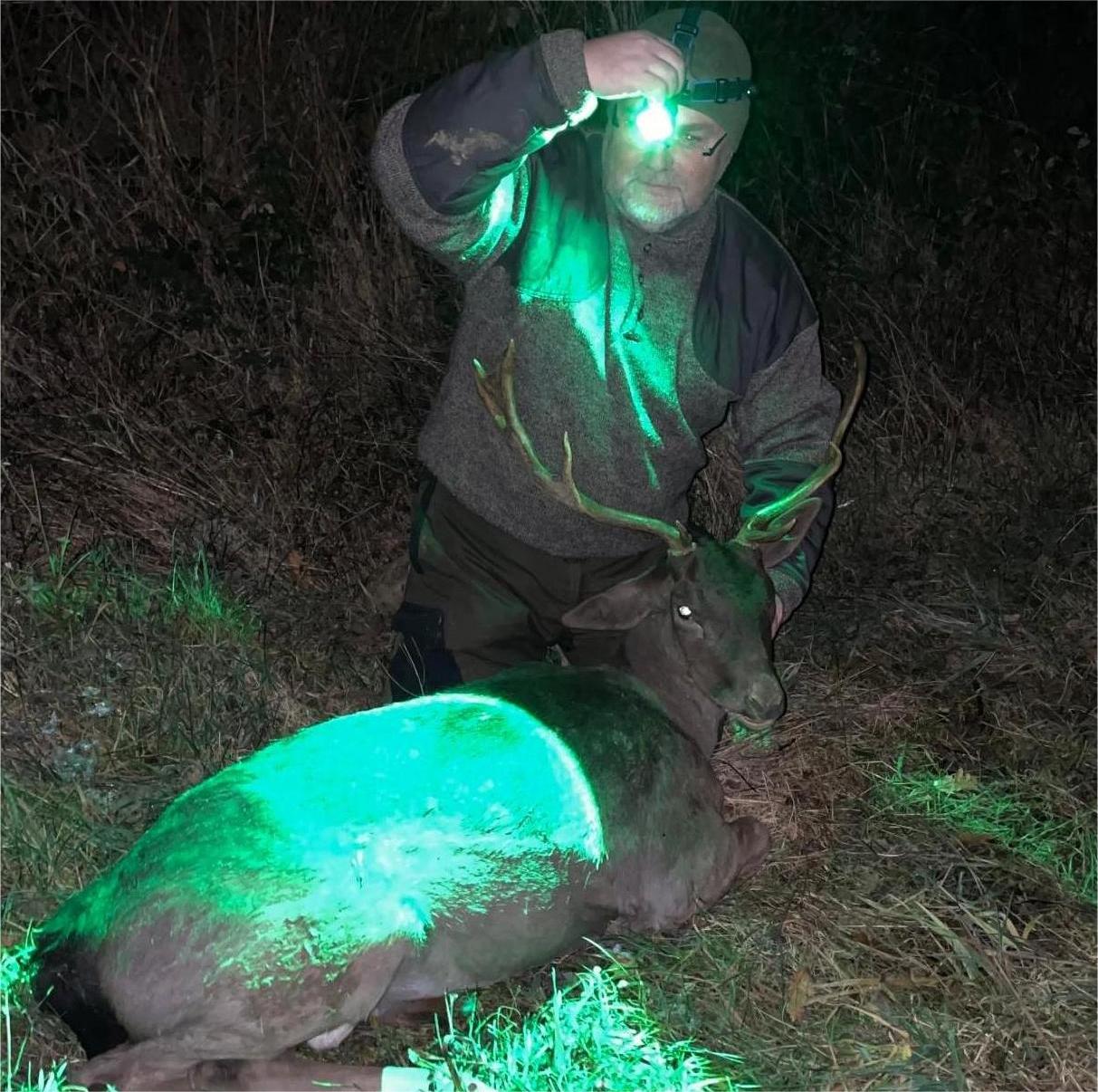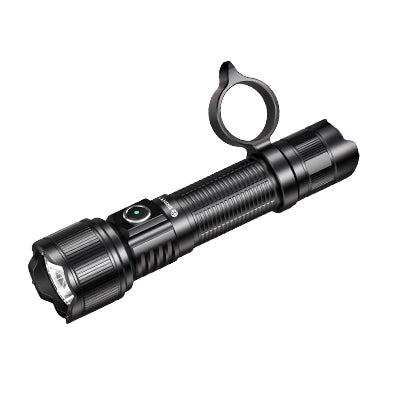Introduction
Night hunting is as much about understanding animals as it is about skill or gear. One of the most underrated variables is light color—the wavelength of the beam you use determines whether an animal stays calm or flees. Because different species see different parts of the spectrum, choosing the right beam directly affects detection, approach opportunities, and shot success.
This guide breaks down how red, green, and white light influence the behavior of animals such as deer, hogs, coyotes, and other common game—and how hunters can use each color strategically.
Why Light Color Matters in Night Hunting
Animals do not see the same color spectrum humans do. Many nocturnal or crepuscular animals have:
- More rod cells → highly sensitive to bright light
- Fewer cone cells → limited color recognition
- Different spectral sensitivity → some wavelengths are barely visible
This means a beam that looks mild to you may appear extremely bright to the animal. Choosing the right color helps you:
- Stay undetected
- Improve approach distance
- Avoid alerting your target
- Enhance identification & safety
Red Light (620–750nm): The Stealth Beam
How Animals React
Most mammals have weak sensitivity to long-wavelength red light.
Deer
- Red appears dim; rarely triggers flight responses.
Hogs
- Very poor red-light detection; tolerant even at moderate brightness.
Coyotes
- More sensitive than hogs, but red still offers excellent concealment.
Best Use Cases
- Close-range stalking
- Predator hunting
- Approaching skittish game
- Low-visibility terrain
Pros
- Least likely to spook animals
- Preserves hunter night vision
- Good for scanning without detection
Cons
- Lower visibility & clarity
- Not ideal for long-range ID

Green Light (520–560nm): A Visibility–Stealth Balance
Green offers brightness and clarity while still remaining less alarming than white.
How Animals React
Deer
- See green clearly; may react if brightness is high.
Hogs
- Tolerate green well; popular choice for hog fields.
Coyotes
- Sensitive to green; best used for long-distance scanning.
Best Use Cases
- Field scanning
- Hog hunting
- Mid-to-long range identification
Pros
- Excellent visibility
- Long throw
- Good detail recognition
Cons
- More detectable by predators
- Slight risk of alerting deer at close range

White Light: Maximum Clarity, Minimal Stealth
White light gives the highest clarity but is also the easiest for animals to detect.
How Animals React
All major game species—deer, hogs, coyotes—detect white light easily.
Typical reactions include:
- Sudden alertness
- Head raise
- Freezing
- Full retreat if the beam lingers
Best Use Cases
- Safety checks
- Confirming exactly what you’re aiming at
- Blood tracking
- Emergency visibility
Pros
- Most natural color rendering
- Best clarity and detail
Cons
- Spooks animals quickly
- Not suitable for scanning
Best Light Color Choices by Animal
Deer
- Best: Red
- OK: Green
- Avoid: White
Hogs
- Best: Green
- Also good: Red
- Avoid: White
Coyotes
- Best: Red
- Possible: Green (long range only)
- Avoid: White
Matching Beam Color With Hunting Scenario
| Scenario | Best Beam Color | Why |
| Predator calling | Red | Conceals movement |
| Long-range scanning | Green | Longer throw & visibility |
| Close stalking | Red | Minimal detection |
| Dense forest | Green / White | Better penetration |
| Target confirmation | White | Maximum detail |
| Hog field setups | Green | Hogs tolerate it |
Recommended Brinyte Lights by Color
🔴 Red Beam Options
Brinyte T28 Artemis (Tri-color rotating system)
Brinyte HL18 Noctua
🟢 Green Beam Options
Brinyte T28 Artemis
Brinyte WT01 Apollo (with color filters)
⚪ White Beam Options
Brinyte PT28 LED Tactical Flashlight
Brinyte PT16 (high throw, multipurpose)

Pro Tips for Using Colored Beams in the Field
- Use low brightness for scanning.
- Avoid shining directly into the animal’s eyes.
- Move the light slowly—movement spooks more than brightness.
- Use spill light to approach instead of pointing the hotspot.
- Match beam pattern to your task (spot for scanning, flood for walking).
FAQ: Light Colors in Hunting
1. Which light color is least visible to most animals?
Red light. Most mammals have weak red detection, making it the best for stealth.
2. Is green light good for deer hunting?
It works, but deer see green better than red. Red is safer for close encounters.
3. Why do hog hunters prefer green light?
Green offers better visibility and hogs are less sensitive to it, creating a good balance.
4. Does white light always spook animals?
Not always, but it’s the most noticeable and risky for scanning or stalking.
5. Which beam color offers the longest visible range?
Green typically gives the longest throw and clearest detail at distance.
6. Is colored light safe for identifying targets?
For initial detection, yes. But for final identification, white light is safest.
7. Can coyotes see red light?
They can detect it faintly, but red is still the hardest wavelength for them to perceive.
8. Should I use colored filters or native LEDs?
Native LEDs (like T28) offer stronger brightness and cleaner color than filters.
9. Does colored light affect my own night vision?
Red preserves night vision best. White is most disruptive.
10. What color is best when hunting multiple species in one night?
Red → safest universal option, especially if you're unsure what species may appear.
Conclusion
Light color is more than a preference—it’s a technical advantage that can determine the success or failure of a hunt. Understanding how different animals perceive red, green, and white beams allows you to approach more quietly, scan more efficiently, and make cleaner, more responsible shots. Whether you're targeting deer, hogs, or coyotes, choosing the right color maximizes both stealth and accuracy.
For hunters looking to upgrade their nighttime advantages, Brinyte’s multi-color and tactical hunting lights offer the precision and flexibility needed to match every situation.



